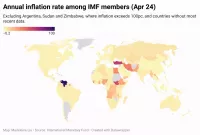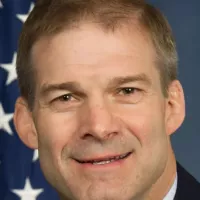1916: Sykes–Picot Agreement
In 1916, the Sykes–Picot Agreement, a secret pact between Britain and France, delineated Lebanon and its surrounding areas as regions open to potential French influence or control.
1918: End of Mount Lebanon Mutasarrifate
In 1918, the Mount Lebanon Mutasarrifate (1861–1918, Arabic: متصرفية جبل لبنان; Turkish: Cebel-i Lübnan Mutasarrıflığı), one of the Ottoman Empire's subdivisions following the Tanzimat reform ended.
1919: Paris Peace Conference
After the war, Patriarch Elias Peter Hoayek campaigned for an expanded territory at the 1919 Paris Peace Conference.
September 1920: Establishment of Greater Lebanon
On September 1, 1920, Greater Lebanon, or Grand Liban, was officially established under French control as a League of Nations Mandate.
1920: Arab Kingdom of Syria's independence
In 1920, King Faisal I proclaimed the Arab Kingdom of Syria's independence and asserted control over Lebanon, but the kingdom was later dissolved after defeat to the French.
1920: Greater Lebanon
In 1920, the name of Greater Lebanon (Arabic: دولة لبنان الكبير Dawlat Lubnān al-Kabīr; French: État du Grand Liban) came into existence.
July 1922: Ratification of arrangement
In July 1922, the arrangement made in September 1920 was ratified.
September 1926: Proclamation of the Lebanese Republic
On September 1, 1926, the Lebanese Republic was officially proclaimed, with the adoption of a constitution inspired by the French constitution.
1932: Promulgation of Code des Obligations et des Contrats
In 1932, the Code des Obligations et des Contrats, equivalent to the French Civil Code, was promulgated in Lebanon.
1932: National census
In 1932, the last national census was conducted in Lebanon. Because the relative sizes of different religions and religious sects remains a sensitive issue, there has not been another census since. Christians made up 53% of Lebanon's population at that time.
November 1941: Independence announcement
On November 26, 1941, General Georges Catroux announced that Lebanon would become independent under the authority of the Free French government.
November 1943: Lebanese government abolished the mandate
On November 8, 1943, the new Lebanese government unilaterally abolished the mandate, leading to their imprisonment by the French, but they were later released due to pressure.
1943: Lebanon gains independence
In 1943, Lebanon gained independence from Free France and established a confessional government, apportioning political powers among major religious groups.
1943: National Pact of 1943
In 1943, Lebanon's unwritten National Pact of 1943 required that its president be Maronite Christian, its speaker of the parliament to be a Shia Muslim, its prime minister be Sunni Muslim, and the Deputy Speaker of Parliament and the Deputy Prime Minister be Greek Orthodox.
1943: Republic of Lebanon independence
In 1943, the name of the sovereign Republic of Lebanon (Arabic: الجمهورية اللبنانية al-Jumhūriyyah al-Lubnāniyyah) came into existence upon its independence.
1943: Christian Emigration
Over 50% of the Lebanese diaspora are Christian, partly due to the large period of Christian emigration before 1943.
October 1945: UN officially came into existence
On 24 October 1945 the UN officially came into existence, and the French mandate for both Syria and Lebanon was legally terminated on that date and full independence attained.
December 1946: Withdrawal of French troops
In December 1946, the last French troops withdrew from Lebanon.
May 1948: Lebanon supported neighboring Arab countries in a war against Israel
In May 1948, Lebanon supported neighboring Arab countries in a war against Israel. While some irregular forces crossed the border and carried out minor skirmishes against Israel, it was without the support of the Lebanese government.
June 1948: Lebanese army captured Al-Malkiyya
On June 5–6, 1948, the Lebanese army captured Al-Malkiyya, which was Lebanon's only success in the war against Israel.
1956: Population Estimate
In 1956, it was estimated that the population of Lebanon was 54% Christian and 44% Muslim.
1958: Insurrection in Lebanon
In 1958, during the last months of President Camille Chamoun's term, an insurrection broke out, instigated by Lebanese Muslims who wanted to make Lebanon a member of the United Arab Republic. Chamoun requested assistance, and 5,000 United States Marines were briefly dispatched to Beirut on 15 July.
1960: Start of the Lebanese Rocket Society
In 1960, a science club from a university in Beirut started a Lebanese space program called "the Lebanese Rocket Society".
1966: End of the Lebanese Rocket Society
In 1966, the Lebanese Rocket Society program was stopped because of both war and external pressure.
1971: Fertility Rate
The fertility rate in Lebanon was 5.00 in 1971.
1975: Outbreak of the Lebanese Civil War
In 1975, a full-scale civil war broke out in Lebanon, pitting Christian groups against the PLO, left-wing Druze, and Muslim militias.
1975: Migration Waves
Since independence, over 1.8 million people emigrated from Lebanon between 1975 and 2011.
1975: Start of Civil War
The 1975 Lebanese civil war heavily damaged Lebanon's economic infrastructure.
1975: Lebanon loses status as politically free country
Until 1975, Lebanon was considered a politically free country. However, the country lost this status with the outbreak of the Civil War.
June 1976: Syrian Army Intervention
In June 1976, Lebanese President Élias Sarkis requested the Syrian Army to intervene on the side of the Christians and help restore peace.
October 1976: Arab League established Arab Deterrent Force
In October 1976 the Arab League agreed to establish a predominantly Syrian Arab Deterrent Force, which was charged with restoring calm.
1976: Syrian military occupation
In 1976, Lebanon was subjugated by a Syrian military occupation, which lasted until 2005.
1977: Escalation of tensions between Lebanon and Israel
PLO attacks from Lebanon into Israel in 1977 escalated tensions between the countries.
March 1978: Coastal Road Massacre and Operation Litani
On 11 March 1978, 11 Fatah fighters hijacked two buses full of passengers on the Haifa – Tel-Aviv road, killing 37 and wounding 76 Israelis. Israel invaded Lebanon four days later in Operation Litani.
1978: Israeli forces withdrew later in 1978
Israeli forces withdrew later in 1978, but retained control of the southern region by managing a 19-kilometre-wide (12 mi) security zone along the border.
1978: First Israeli invasion
Since 1978, Lebanon has been the scene of several conflicts with Israel, marking the fourth Israeli invasion.
April 1980: At Tiri incident
In April 1980, the killing of two UNIFIL soldiers and the injuring of a third by the South Lebanon Army, near At Tiri, in the buffer zone led to the At Tiri incident.
July 1981: Israeli aircraft bombed multi-story apartment buildings in Beirut
On 17 July 1981, Israeli aircraft bombed multi-story apartment buildings in Beirut that contained offices of PLO associated groups, leading to worldwide condemnation.
August 1981: Plans to attack PLO military infrastructure in West Beirut
In August 1981, defense minister Ariel Sharon began to draw up plans to attack PLO military infrastructure in West Beirut, where PLO headquarters and command bunkers were located.
September 1982: Civil War Re-Emerges After Assassination of Bachir Gemayel
In September 1982, the Lebanese civil war re-emerged following the assassination of Lebanese President Bachir Gemayel, an Israeli ally. This event led to further fighting and sectarian massacres, including those in Sabra and Shatila refugee camps.
1982: Asfouriyeh Hospital Closure
The Asfouriyeh Hospital, the first modern mental health hospital in the Middle East, closed in 1982 due to the impact of the Lebanese Civil War.
1983: Multinational Force Deployed in Beirut
In 1983, a British contingent joined the American, French and Italian contingents that were deployed in Beirut to supervise the evacuation of the PLO, following the Israeli siege of the city.
1984: Withdrawal of Multinational Force
In the spring of 1984, the multinational force withdrew from Beirut, Lebanon, following a devastating bombing attack the previous year.
1985: Israeli military occupation
In 1985, Lebanon was subjugated by an Israeli military occupation, which lasted until 2000.
1987: Collapse of Lebanese Pound
In 1987, the Lebanese pound collapsed, with US$1 worth £L500, leaving many children reliant on subsidized bread and those who could relied on foreign assistance.
September 1988: Failure to Elect a President
In September 1988, the Lebanese Parliament failed to elect a successor to President Gemayel due to differences between Christians, Muslims, and Syrians.
May 1989: Arab League Summit Forms Committee
In May 1989, the Arab League Summit led to the formation of a Saudi–Moroccan–Algerian committee to solve the Lebanese crisis.
September 1989: Issuance of Peace Plan and Ceasefire
On 16 September 1989, a Saudi–Moroccan–Algerian committee issued a peace plan, which was accepted by all parties. A ceasefire was established, ports and airports were reopened, and refugees began to return.
1990: Amendment of Article 95
In 1990, Article 95 of the Lebanese constitution was amended to address political structure based on religious affiliation.
1990: End of the Civil War
In 1990, the Lebanese Civil War ended after 16 years, causing immense loss of life, property damage, and economic devastation. Approximately 150,000 people were killed, and nearly a million were displaced.
1990: Taif Agreement adjusts representation
Prior to 1990, the ratio of seats in the Parliament of Lebanon stood at 6:5 in favor of Christians, but the Taif Agreement, which put an end to the 1975–1990 civil war, adjusted the ratio to grant equal representation to followers of the two religions.
1997: Closure of the Bourj Hammoud dump
In 1997, the Bourj Hammoud dump was closed.
1998: Opening of the al-Naameh dumpsite
In 1998, the government opened the al-Naameh dumpsite after the closure of the Bourj Hammoud dump.
May 2000: Israeli Withdrawal from Lebanon
In May 2000, Israeli forces fully withdrew from Lebanon, marking 25 May as Liberation Day.
2000: End of Israeli occupation
In 2000, the Israeli occupation of Lebanon, which began in 1985, ended.
2000: Rugby League World Cup Participation
The Lebanon national rugby league team participated in the 2000 Rugby League World Cup.
2001: Enactment of Investment Law No.360
In 2001, Investment Law No.360 was enacted to reinforce the Investment Development Authority of Lebanon's mission.
2001: Lebanon concludes negotiations with the European Union
In late 2001, Lebanon concluded negotiations on an association agreement with the European Union.
January 2002: Association agreement initialed with the European Union
In January 2002, Lebanon and the European Union initialed an association agreement.
March 2002: Arab League Summit
In March 2002, Lebanon hosted an Arab League Summit for the first time in over 35 years.
October 2002: Francophonie Summit
In October 2002, Lebanon hosted the Francophonie Summit.
2004: Industry's role in workforce and GDP
In 2004, industry ranked second in workforce, with 26% of the Lebanese working population, and second in GDP contribution, with 21% of Lebanon's GDP.
2004: Fertility Rate
In 2004, the fertility rate in Lebanon fell to 1.75.
February 2005: Assassination of Rafic Hariri
On 14 February 2005, former Prime Minister Rafic Hariri was assassinated in a car bomb explosion in Beirut, triggering the Cedar Revolution.
April 2005: Withdrawal of Syrian Troops
By 26 April 2005, all Syrian soldiers had withdrawn from Lebanon under pressure from the West, following the Cedar Revolution.
October 2005: Publication of Mehlis Report
On 20 October 2005, the United Nations International Independent Investigation Commission published preliminary findings in the Mehlis report, citing indications that the assassination of Rafic Hariri was organized by Syrian and Lebanese intelligence services.
2005: Foreign Military Aid
As of 2005, Lebanon became the second largest per capita recipient of American military aid, receiving over $400 million since then.
2005: Use of French Language
As of 2005, approximately 20% of the population in Lebanon used French on a daily basis.
2005: Skilled Labor Proportion
In 2005, Lebanon had the largest proportion of skilled labor among Arab States.
2005: End of Syrian occupation
In 2005, the Syrian occupation of Lebanon, which began in 1976, ended.
2005: Restrictions on Palestinian jobs
Until 2005, Palestinians were forbidden to work in over 70 jobs because they did not have Lebanese citizenship.
July 2006: Hezbollah Attacks and Israeli Response
On 12 July 2006, Hezbollah initiated rocket attacks and raids into Israeli territory, leading to an Israeli military response with airstrikes, artillery fire, and a ground invasion of southern Lebanon, initiating the 2006 Lebanon War.
July 2006: Lebanon Stability
Until July 2006, Lebanon enjoyed considerable stability, Beirut's reconstruction was almost complete.
August 2006: Economic decline expected
According to a preliminary report published by the Lebanese Ministry of Finance on 30 August 2006, a major economic decline was expected as a result of the fighting.
August 2006: UNSC Resolution 1701 Ceasefire
On 14 August 2006, the 2006 Lebanon War officially ended with UNSC Resolution 1701, which mandated a ceasefire, the withdrawal of Israeli forces from Lebanon, and the disarmament of Hezbollah.
2006: Protests Against the Prime Minister
Between 2006 and 2008, protests led by groups opposed to Prime Minister Fouad Siniora demanded the creation of a national unity government.
October 2007: Lebanon Without a President
In October 2007, when Émile Lahoud's presidential term ended, the opposition refused to vote for a successor unless a power-sharing deal was reached, leaving Lebanon without a president.
2007: Liberalization laws passed
In 2007, liberalization laws were passed, reducing the number of banned jobs for Palestinians to around 20.
May 2008: Hezbollah Seizes Western Beirut
On 7 May 2008, Hezbollah and Amal forces seized western Beirut, sparking an intrastate military conflict. On 21 May 2008, the Doha Agreement was signed, ending the fighting and establishing a national unity government.
2008: Protests Against the Prime Minister
Between 2006 and 2008, protests led by groups opposed to Prime Minister Fouad Siniora demanded the creation of a national unity government.
2008: Deadliest Clashes Since 2008
Days later, in October 2021 Sectarian violence in Beirut killed a number of people in the deadliest clashes in the country since 2008.
2008: Tourism in Lebanon
In 2008, Lebanon attracted around 1,333,000 tourists, placing it as 79th out of 191 countries.
2008: Remittances from Lebanese abroad
In 2008, remittances from Lebanese abroad totaled $8.2 billion, accounting for one-fifth of the country's economy.
2008: Education Index
In 2008, the United Nations assigned Lebanon an education index of 0.871, ranking it 88th out of 177 participating countries.
2008: World Cup Tournament
Lebanon narrowly missed qualification for the 2008 Rugby League World Cup tournament.
2008: Infrastructure Rebuilding
Over the course of 2008, Lebanon rebuilt its infrastructure mainly in the real estate and tourism sectors, resulting in a comparatively robust post war economy.
2009: Armenian Population
As of 2009, there were around 150,000 Armenians in Lebanon, making up approximately 5% of the population.
2009: Jeux de la Francophonie
In 2009, Lebanon hosted the Jeux de la Francophonie.
2009: Beirut Travel Destination
In 2009, The New York Times ranked Beirut the No. 1 travel destination worldwide.
2009: Healthcare Statistics
In 2009, there were 31.29 physicians and 19.71 nurses per 10,000 inhabitants in Lebanon.
2009: European Cup Participation
Lebanon took part in the 2009 European Cup, finishing 3rd in the tournament after defeating Ireland.
January 2010: Tourism Increase
In January 2010, the Ministry of Tourism announced that 1,851,081 tourists had visited Lebanon in 2009, a 39% increase from 2008.
November 2010: Hezbollah Drafts Plans for Takeover
In November 2010, a report leaked by the Al-Akhbar newspaper stated that Hezbollah had drafted plans for a violent takeover of the country in case the Special Tribunal for Lebanon issued an indictment against its members.
2010: Palestinians granted equal work rights
In 2010, Palestinians were granted the same rights to work as other foreigners in the country.
2010: Healthcare Spending
In 2010, spending on healthcare accounted for 7.03% of Lebanon's GDP.
2010: Environment Ministry sets a 10-year plan to increase forest coverage
In 2010, the Environment Ministry set a 10-year plan to increase the national forest coverage by 20%, equivalent to planting two million new trees each year.
January 2011: Collapse of National Unity Government
In early January 2011, the national unity government in Lebanon collapsed due to tensions related to the Special Tribunal for Lebanon.
2011: Voter Registration Study
A study based on voter registration numbers shows that by 2011, the Christian population was stable compared to that of previous years, making up 34.35% of the population; Muslims, the Druze included, were 65.47% of the population.
2011: Origin Countries of Tourists
In 2011, Saudi Arabia, Jordan, and Japan were the three most popular origin countries of foreign tourists to Lebanon.
2011: Life Expectancy
In 2011, the life expectancy at birth in Lebanon was 72.59 years.
2011: Lebanon Reforestation Initiative inaugurated
In 2011, the plan to increase forest coverage was inaugurated by planting cedar, pine, wild almond, juniper, fir, oak and other seedlings, in ten regions around Lebanon.
2011: Hospital Admissions
In 2011, there were 236,643 subsidized admissions to hospitals in Lebanon.
2011: Migration Waves
Since independence, over 1.8 million people emigrated from Lebanon between 1975 and 2011.
2012: Forest cover in Lebanon
As of 2012, forests covered 13.4% of the Lebanese land area, and they are under constant threat from wildfires caused by the long dry summer season.
2012: Rise in popularity of Japanese cuisine
In 2012, it was reported that an influx of Japanese tourists had caused a rise in popularity of Japanese cuisine in Lebanon.
2012: Syrian Civil War Spillover
In 2012, the Syrian civil war began to spill over into Lebanon, causing sectarian violence and armed clashes in Tripoli.
2012: Emergence of Lebanon Water Festival NGO
Since 2012 and with the emergence of the Lebanon Water Festival NGO, more emphasis has been placed on water sports in Lebanon.
2012: Decline in Tourist Arrivals
Tourist arrivals in Lebanon fell by 37% for the first 10 months of 2012, a decline caused by the war in neighbouring Syria.
May 2013: Clarification on Seismic Images of Seabed
On 10 May 2013, the Lebanese minister of energy and water clarified that seismic images of the Lebanese sea bed are undergoing detailed explanation of their contents.
2013: Syrian Refugee Estimate
A 2013 estimate by the United Nations put the Syrian refugee population in Lebanon at over 1.25 million.
2013: Global Information Technology Report Ranking
According to surveys from the World Economic Forum's 2013 Global Information Technology Report, Lebanon was ranked as the fourth best country globally for math and science education.
2013: Concerns Over Syrian Refugees
In 2013, Lebanese parties voiced concerns that the country's political system was being undermined by the influx of Syrian refugees.
2013: Lebanon rated "Partly Free"
In 2013, Lebanon was rated "Partly Free" by Freedom House.
2013: World Cup Tournament
Lebanon narrowly missed qualification for the 2013 Rugby League World Cup tournament.
2013: Gender and Sexuality Conference
Since 2013, a gender and sexuality conference has been held annually in Lebanon.
May 2014: Lebanon without a President
Lebanon was without a President between May 2014 and October 2016.
November 2014: Lebanese parliament extends its own term
On 5 November 2014, the Lebanese parliament extended its own term, an act which came in direct contradiction with democracy.
2014: Increase in Syrian Refugees
According to UNHCR, in late 2014, the number of Syrian refugees in Lebanon increased to 1,000,000.
2014: World Values Survey
The World Values Survey of 2014 put the percentage of atheists in Lebanon at 3.3%.
May 2015: UNHCR Suspends Registration of Syrian Refugees
On 6 May 2015, UNHCR suspended registration of Syrian refugees at the request of the Lebanese government.
July 2015: Closure of al-Naameh dumpsite
In July 2015, residents forced the closure of the al-Naameh dumpsite, which had exceeded its capacity by 13 million tons, contributing to a severe garbage crisis in Mount Lebanon and Beirut.
December 2015: Lebanon signs agreement to export waste
In December 2015, the Lebanese government signed an agreement with Chinook Industrial Mining and Howa International to export over 100,000 tons of untreated waste from Beirut and the surrounding area at a cost of $212 per ton.
February 2016: Signing of the Lebanon Compact
In February 2016, the Lebanese government signed the Lebanon Compact, granting a minimum of €400 million of support for refugees and vulnerable Lebanese citizens.
February 2016: Government withdraws from waste export negotiations
In February 2016, the government withdrew from negotiations to export trash to Russia after documents relating to the export were revealed to be forgeries.
March 2016: Naameh landfill reopened
On 19 March 2016, the Cabinet reopened the Naameh landfill for 60 days as part of a plan to end the trash crisis. The plan also included the establishment of landfills in Bourj Hammoud and Costa Brava.
October 2016: Government Estimate of Syrian Refugees
As of October 2016, the Lebanese government estimated that the country hosted 1.5 million Syrians.
October 2016: End of presidential vacancy
Lebanon was without a President between May 2014 and October 2016.
2016: Forest coverage in Lebanon
As of 2016, forests covered 13.6% of Lebanon, and other wooded lands represented a further 11%.
2017: Leading Causes of Hospital Deaths
According to the Ministry of Public Health in Lebanon, the top 10 leading causes of reported hospital deaths in 2017 included malignant neoplasm of bronchus or lung and Acute myocardial infarction.
2017: Palestinian refugees in Lebanon
As of 2017, between 174,000 and 450,000 Palestinian refugees live in Lebanon.
2017: Human Rights Watch finds garbage crisis poses health risk
In 2017, Human Rights Watch found that Lebanon's garbage crisis, and open burning of waste in particular, was posing a health risk to residents and violating the state's obligations under international law.
2017: Rugby League World Cup Quarter-Finals
Lebanon qualified for the 2017 Rugby League World Cup, reaching the quarter-finals and narrowly losing to Tonga.
May 2018: Nationwide elections scheduled
Nationwide elections were finally scheduled for May 2018.
September 2018: Lebanon bans open dumping and burning of waste
In September 2018, Lebanon's parliament passed a law that banned open dumping and burning of waste, though violations continued.
October 2018: Open burning of dumps witnessed by Human Rights Watch
In October 2018, Human Rights Watch researchers witnessed the open burning of dumps in al-Qantara and Qabrikha, despite the law banning such practices.
2018: Shutdown of Gender and Sexuality Conference
In 2018, the General Security Forces shut down the gender and sexuality conference and denied entry to non-Lebanese LGBT activists.
2018: GDP Shrinkage Start
Since 2018, the GDP of Lebanon has shrunk by 40%.
August 2019: Hezbollah affiliation in Lebanese cabinet
As of August 2019, the Lebanese cabinet included two ministers directly affiliated with Hezbollah, in addition to a close but officially non-member minister.
October 2019: Mass Civil Demonstrations Erupt
On 17 October 2019, mass civil demonstrations erupted in Lebanon, initially triggered by planned taxes on gasoline, tobacco, and online phone calls through services such as WhatsApp, but expanded into a nationwide condemnation of sectarian rule and corruption.
October 2019: Forest fires break out across Lebanon
On Sunday 13 October 2019, a series of about 100 forest fires broke out and spread over large areas of Lebanon's forests. Countries such as Cyprus, Jordan, Turkey and Greece participated in firefighting. The fires had decreased by Tuesday (15 October) due to rains.
December 2019: Designation of Hassan Diab as Prime Minister
On 19 December 2019, Hassan Diab was designated as the next prime minister of Lebanon and tasked with forming a new cabinet amidst ongoing protests.
2019: Homosexuality Unacceptance
According to a 2019 survey by the Pew Research Center, 85% of Lebanese respondents believe that homosexuality should not be accepted by society.
2019: Unsustainable Economic Situation
By 2019, insufficient new deposits led to an unsustainable economic situation in Lebanon, resulting in bank closures and capital controls.
2019: Forest Landscape Integrity Index
In 2019, Lebanon had a Forest Landscape Integrity Index mean score of 3.76/10, ranking it 141st globally out of 172 countries.
2019: Global Innovation Index Ranking
In 2019, Lebanon was ranked 88th in the Global Innovation Index.
2019: Gender and Sexuality Conference moved abroad
In 2019, a gender and sexuality conference was moved abroad after a religious group called for the organizers' arrest.
August 2020: Beirut Port Explosion
On 4 August 2020, a large explosion at the port of Beirut killed over 200 people and injured thousands, leading to the resignation of Prime Minister Hassan Diab and his cabinet on 10 August 2020.
2020: Holy Spirit University of Kaslik Ranking
As of 2020, the Holy Spirit University of Kaslik was ranked in the #600s worldwide.
2020: Agricultural Sector Contribution to GDP
As of 2020, the agricultural sector in Lebanon contributed 3.1% to the country's GDP.
2020: Country Default
In 2020, Lebanon defaulted on its debt.
2020: Beirut explosion
In 2020, the Beirut explosion, combined with a liquidity crisis and corruption, led to the collapse of Lebanon's currency, political instability, and resource shortages.
2020: CIA World Factbook Estimates
In 2020, the CIA World Factbook estimates that Lebanon's population is 67.8% Muslim (31.9% Sunni, 31.2% Shia), 32.4% Christian (Maronite Catholics are the largest Christian group), and 4.5% Druze.
March 2021: Warning of "Total Darkness"
On 11 March 2021, the caretaker minister of energy warned that Lebanon was threatened with "total darkness" at the end of March if no money was secured to buy fuel for power stations.
August 2021: Fuel Explosion in Northern Lebanon
In August 2021, a large fuel explosion in northern Lebanon killed 28 people.
October 2021: Nationwide Power Outage
On 9 October 2021, the entire nation of Lebanon lost power for 24 hours after its two main power stations ran out of fuel due to the currency and fuel shortage.
2021: Notre Dame University-Louaize Ranking
As of 2021, Notre Dame University-Louaize (NDU) was ranked #701 worldwide.
2021: Continued Demonstrations
In 2021, demonstrations continued with Lebanese citizens blocking roads with burning tires to protest against poverty and the ongoing economic crisis.
2021: Population Estimate
Lebanon had an estimated population of 5,592,631 in 2021.
2021: Rugby League World Cup Quarter-Finals
Lebanon took part in the 2021 Rugby League World Cup, losing in the quarterfinal to Australia.
January 2022: Deepening Crisis and Election Delay
By January 2022, the crisis in Lebanon had deepened further, with the value of the Lebanese pound plummeting and a scheduled general election expected to be delayed indefinitely.
April 2022: Migrant boat sinks off Tripoli
In April 2022, 6 people died and around 50 people were rescued after an overloaded boat sunk in Tripoli, Lebanon. The boat was carrying migrants attempting to flee the country.
May 2022: Lebanon holds its first election since economic crisis
In May 2022, Lebanon held its first election since the start of its economic crisis. In this election the Shia Muslim Hezbollah movement (and its allies) lost their parliamentary majority. However, Hezbollah did not lose any of its seats.
May 2022: Parliamentary elections held
The most recent parliamentary elections were held on 15 May 2022.
2022: American University of Beirut Ranking
As of 2022, the American University of Beirut was ranked as the second best university in the Middle East and #226 worldwide.
February 2023: Lebanese pound devalued by 90%
On 1 February 2023, the central bank of Lebanon devalued the Lebanese pound by 90% due to the ongoing financial crisis. This was the first time in 25 years that Lebanon had devalued its official exchange rate.
2023: Lebanon second most electoral democratic country in the Middle East
According to the V-Dem Democracy indices Lebanon is 2023 the second most electoral democratic country in the Middle East.
2023: Economic Crisis
As of 2023, Lebanon is experiencing the worst economic crisis in decades, with a significant GDP shrinkage and currency depreciation.
September 2024: Escalation of Israel-Hezbollah conflict; Israeli airstrikes on Lebanon
In September 2024, the conflict between Israel and Hezbollah escalated severely, starting with the Israeli explosion of Lebanese pagers and walkie talkies. The 23 September 2024 Israeli airstrikes on Lebanon killed at least 558 people and sparked a mass exodus from southern Lebanon.
October 2024: Israel invades Lebanon
On 1 October 2024, Lebanon was invaded by Israel with the objective of destroying infrastructure belonging to Hezbollah in the south of the country.
November 2024: Ceasefire deal signed between Israel and Hezbollah
In November 2024, a ceasefire deal was signed between Israel and the Lebanese armed group Hezbollah to end 13 months of conflict. Hezbollah was given 60 days to end its armed presence in southern Lebanon and Israeli forces were obliged to withdraw from the area over the same period.
December 2024: Syrian regime change
The Syrian regime change in December 2024 was said to start a new chapter in Lebanese politics and was a blow to Hezbollah.
2024: Number of Refugees
As of 2024, Lebanon hosted over 1.6 million refugees and asylum seekers.
2024: Global Innovation Index Ranking
In 2024, Lebanon was ranked 94th in the Global Innovation Index.
January 2025: Joseph Aoun elected as Lebanese President
In January 2025, Joseph Aoun, the Lebanese army commander, was elected Lebanese 14th president after a two-year vacancy.
February 2025: Nawaf Salam forms a new government
In February 2025, Prime Minister Nawaf Salam, former president of the International Court of Justice (ICJ), formed a new government of 24 ministers after a two-year caretaker cabinet. On 26 February 2025, Lebanon's government of Nawaf Salam won a confidence vote in parliament.
May 7, 2025: UAE lifts travel ban on Lebanon
On May 7, 2025, the United Arab Emirates (UAE) has announced that it will lift its travel ban on Lebanon.
2025: Storm Adam affects Lebanon
In 2025, Storm Adam, a severe polar weather system, affected Lebanon with low temperatures and snow expected to fall at elevations as low as 300 meters above sea level.
Mentioned in this timeline
Saudi Arabia officially the Kingdom of Saudi Arabia KSA is...
Germany officially the Federal Republic of Germany is a Western...
Africa is the second-largest and second-most populous continent comprising of...
BBC News a division of the British Broadcasting Corporation is...

Inflation in economics signifies an increase in the average price...
Japan is an East Asian island country situated in the...
Trending

2 months ago Lake Tahoe: Service Roads Closure, Heavenly Village Ice Rink Opens with Bear!

Kliff Kingsbury is an American football coach currently serving as the offensive coordinator for the Washington Commanders in the NFL...
The Topps Company is an American manufacturer of trading cards and collectibles most notably known for its baseball and other...
5 months ago Pope Leo XIV's First 100 Days: Reflections, Reactions, and US-Born Leadership

7 months ago Jasmine Crockett: Republicans' Shocking Messages Fuel Trump Concerns, Acosta's Jailed Fears.

Jim Jordan is a Republican politician representing Ohio's th congressional district in the U S House of Representatives since He...
Popular

Stranger Things created by the Duffer Brothers is a popular...

XXXTentacion born Jahseh Dwayne Ricardo Onfroy was a controversial yet...

Kelsey Grammer is an accomplished American actor producer and singer...

Candace Owens is an American conservative political commentator and author...

Melania Trump a Slovenian-American former model has served as First...

Bernie Sanders is a prominent American politician currently serving as...
